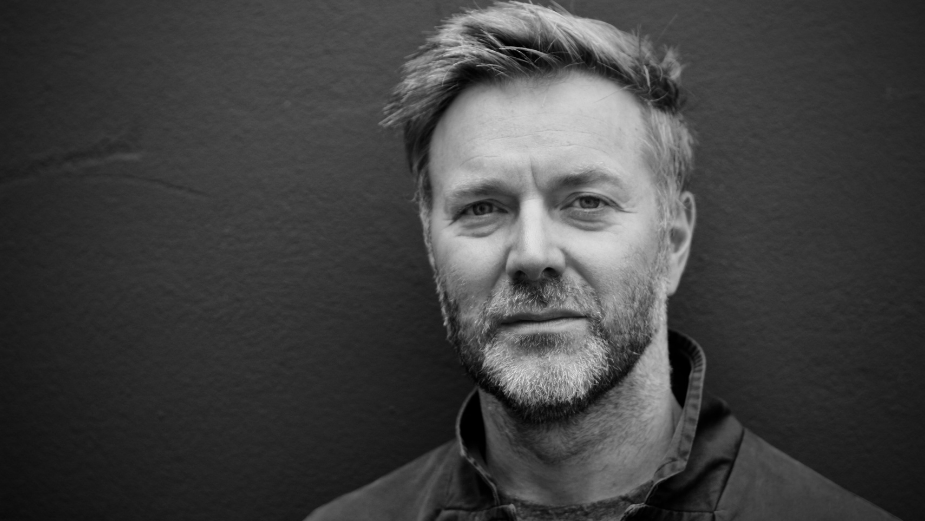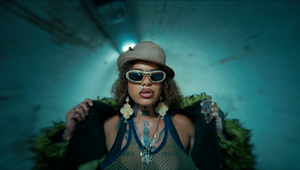
Alex Webster: “For Brands, Virtual Production Should Be a Part of Campaign Strategy”

Virtual Production is a hot topic, and one which garners extensive attention, and questions. In collaboration with LBB, Unreal Engine is sponsoring the ‘Virtual Production’ channel, where we will be speaking with some of the industry’s most forward-thinking and innovative minds to explore some of the biggest questions surrounding this new way of working.
Alex Webster is one of those minds. As head of Pixomondo’s new London studio, Alex is at the forefront of some of the most exciting tech in the virtual production space. So to find out more about what virtual production really is, and what it can offer the advertising world, Alex sat down with LBB. Here’s what he said.
LBB> You recently joined PIXOMONDO as its London head of studio - how are you finding it so far?
Alex> Yes! I joined in September last year, and I’ve been brought on to set up what will be our London studio, and that’s multifaceted in that we’re creating a whole range of creative pre-production services which range from early-stage concept, to design which takes us into virtual art department which is creating assets in environments inside Unreal Engine - to be able to then continue that journey into early stage previsualisation. The thing that we’re doing uniquely is also building our own LED Volume, which allows you to shoot essentially photo-real looking environments inside a soundstage. But the genius bit is that the background moves in real-time relative to what the cameras are doing.
It’s come at a point where I think we’re seeing for the first time in a very, very long time, a genuine paradigm shift in how content is made at a moment in time as well where the traditional sort of content distribution and audience engagement model has been totally upended.
LBB> On the topic of virtual production, here’s a simple but slightly big question: What is it and what does it offer to production? And I suppose, what’s all the fuss about?
Alex> One of the buzzwords that has really come to the fore in the production world, be it long-form or short-form, over the last couple of years is ‘virtual production’, and there's a lot of different interpretations as to what that is - it's not one thing.
For Pixomondo, I think we would say that virtual production is an umbrella term for a spectrum of computer-aided production methods, which combine VR and AR with traditional CGI, and game engine technology like Unreal Engine to enable production crews to see their scenes as they are composed and unfold onset. So you can break that down into a few different areas.
I'd distinguish between what I've alluded to already, agile virtual production, and ICVFX, which is the AD world. So within agile virtual production, that's where we're talking about lightweight, nimble, often handheld tools that work in AR or VR, that allow you to explore an environment or shoot scenes on a virtual camera. It includes a virtual art department, which is where we work with production design to take initial concepts and build them in a game engine so that they can be visualised, changed, and adapted in real-time. And those assets that you're building, that's the foundational part of the long-term journey. They’re the assets that you start with, which over time will end up as your final pixels.
LBB> Why is virtual production relevant to the commercial and advertising market?
Alex> What we have now is a whole suite of tools, which allow you as a filmmaker or a creative director, to visualise either your feature film sequence or your 30 second TV spot, in a way which is much more representative of what the final thing is going to be.
When it comes to staging, I think this is where it's relevant to a lot of commercial filmmakers: It allows for a lot of early exploration. It doesn't take away from the creative process. It just means that you're better informed to make meaningful creative decisions earlier in the piece. It means that you can manage the expectations of your creative director, your account managers, and your clients in a much more coherent way. So there are far fewer surprises, essentially. And it means that your money and your schedule can go a lot further, because you’ve got a much better opportunity to visualise what you’re making in an interactive sense, and you don't have to remake again as you go through the process.
LBB> You used the LED volume for last year’s campaign with McDonalds. What can you tell us about that experience? In the initial conversations, how was virtual production discussed? Why is this such a strong example of successful virtual production?
Alex> For commercial projects where the scope may not be as expansive, and it’s built around one location, the LED volume provides a really good option allowing you to maximise the time spent on set. Our team in Toronto had some time on their hands and wanted to communicate to the advertising community there just how powerful short form shooting can be in this environment.
They worked on the script with the creative agency and McDonalds advocated it, and then two weeks were spent designing the restaurant environment itself, and once that was approved, bringing it into Unreal Engine and Maya to build it with all the texture. All without any photography but creating a photoreal version of it, in Unreal Engine.
LBB> What can the time scale be for these kinds of projects? And why should brands be including it in their campaign strategies?
Alex> Once the set was blended - between the stage floor and where the Volume starts - the whole thing was shot in six hours.
If it had been a practical shoot, it would have been two days minimum on location, an extensive set build, all the rest of it. Within the LED Volume context, you're shooting bright sunshine, sunrise, night - we often say it’s always ‘magic hour’ in the volume. I think it shows that with the correct thought for a script that is designed to maximise the use of that technology, it can be incredibly effective. From my experience working for more than 20 years at production companies and agencies and across visual effects, all my experience says that, for brands to be able to commit to those early-stage decisions, it’s a big ask.
But there's always a lot of work after the shoot, and once the client has seen an edit, they can sometimes want to completely change it. So it will be very interesting to see the kind of smart savvy brand that adopts this kind of filmmaking because you're playing a slightly longer game if you're looking at it in terms of a campaign strategy that might run over months or even years.
LBB> How can virtual production help at a time where expectations are higher than ever, but on the flipside, budgets are lower?
Alex> With virtual production in the context of what we do at Pixomondo, you're creating assets that can then be amortised over time. It’s incredibly efficient, and if you're creating foreign versions for example, in the case of McDonald's, you may want to shoot that same setup and that same commercial with foreign language posters in the background, a different ethnicity of the cast, and different props which relate to a certain country or location. We can make those changes, quickly and cost-effectively with the Volume and game engine tech, without compromising on the creative.
LBB> Can virtual production democratise the production landscape?
Alex> I think that's probably one of the most exciting things about what we're doing - a lot of tools were created to support the big tentpole feature projects but the application of it now means production, on the whole, is being democratised, and the tools are accessible to a whole generation of younger filmmakers coming through. And whether you're shooting an indie or test commercial, there's an opportunity to work in a new way. I think historically there's always been such a barrier to entry for new talent coming through because hardware gear is expensive. So, you know, one of the things that Epic has brought to the table is an open source platform - Unreal Engine - which is extraordinary, and they have invested a lot of money in supporting businesses like ours. To develop tools that can then get utilised by the whole creative production community.
LBB> Could this solve some of the industry’s big problems regarding carbon footprint and sustainability?
Alex> The waste is horrifying. I think we’re talking about a different world now, where you’re trying to connect with as wide an audience as possible, reaching across different touchpoints. If you’re creating your environments and assets in Unreal Engine, you can leverage that work across a myriad of platforms. It means you’re creating a bigger ecosystem with the content, and that’s always been difficult in a traditional sense.
With sustainability, it’s about linking creatives with strategists and media planners, brands, and so on to understand the power of this technology - and not just in a single-use case. If you have a long-running campaign, where you’re building practical sets and then striking them down and disposing of them, there’s frankly a better way. It’s something we should be taking really seriously.
LBB> And is this the future of production?
Alex> If I was a brand owner, and I was looking at a campaign strategy for the next two years, I would be basing a method or a creative concept around how best to leverage this kind of technology, because it means I will get a lot more for my investment and I'll be able to transmediate a lot of that content in a way that we haven't been able to do historically. So whether it's content for your Instagram story or your billboard, it can seamlessly be adapted now.









